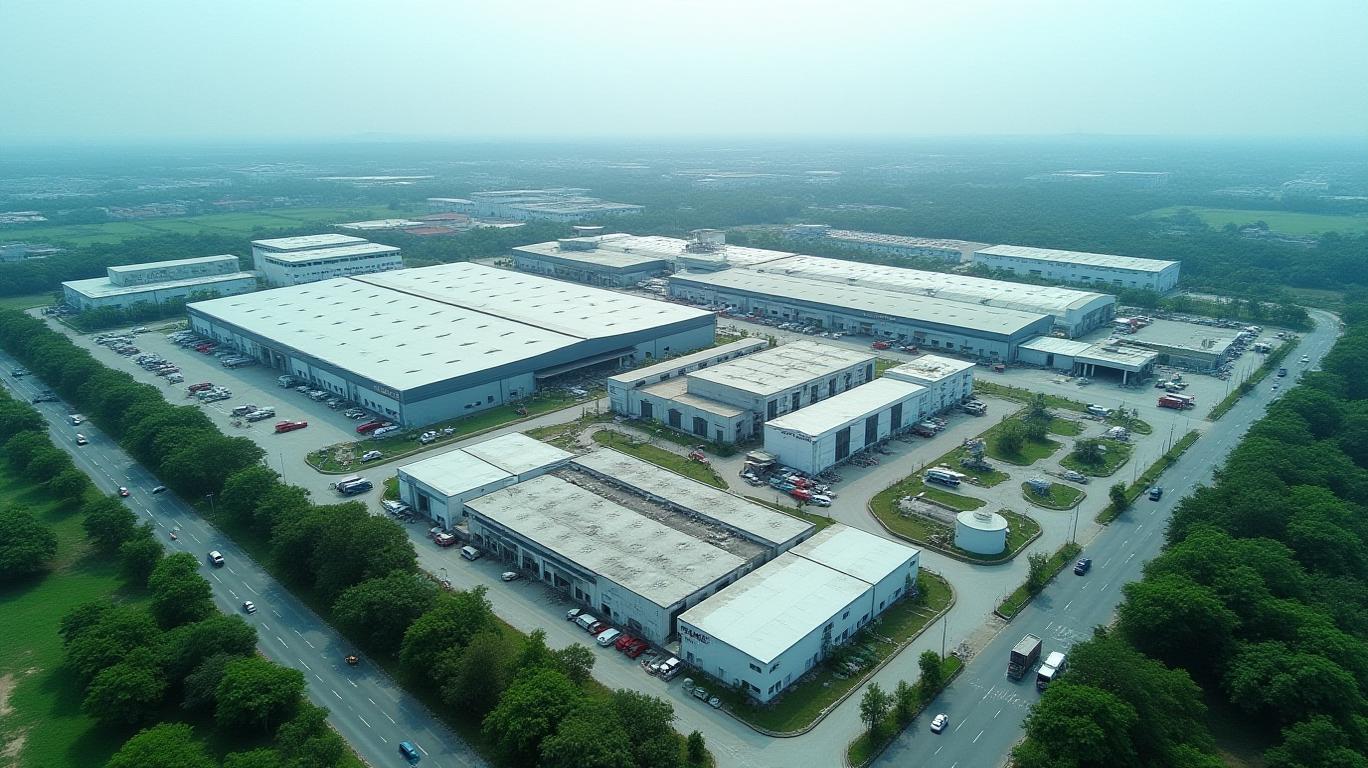Apple's Global Manufacturing Gambit: Navigating Tariffs, Risks, and Reward in the Tech Supply Chain
The U.S.-China trade war has reached a fever pitch, with tariffs now exceeding 34% on Chinese imports—a direct assault on the backbone of global tech manufacturing. For
(AAPL), this is no academic exercise: its supply chain, which once relied on China for 80% of iPhone production, now faces a precarious balancing act between cost, risk, and geopolitical survival. As the company accelerates its shift to Vietnam and India, investors are faced with a pivotal question: Will this realignment unlock new opportunities—or expose vulnerabilities in an overleveraged supply chain?The Tariff Tsunami: How U.S. Trade Policy Is Rewriting Tech's Rules
The numbers are stark. By May 2025, the U.S. has imposed a 34% tariff on all Chinese-origin goods, with retaliatory measures from Beijing pushing U.S. exports into a 125% penalty regime. The economic toll is profound: U.S. GDP growth is projected to shrink by 0.8 percentage points in 2025, while consumer prices for electronics and apparel have surged by 40% in some categories. For Apple, the stakes are existential. Its iPhones, once synonymous with Shenzhen's assembly lines, now risk becoming prohibitively expensive if produced solely in China.
Apple's Pivot to the East: A Play for Survival or a Costly Gamble?
Apple's response has been swift. By 2025, 25% of iPhones destined for the U.S. are now assembled in India, with Vietnam handling 90% of AirPods and 20% of iPads. The goal is clear: avoid tariffs and diversify risk. But the reality is messy.
Vietnam: The Component Crunch
While Vietnam has emerged as a hub for wearables and peripherals, its reliance on Chinese-made components (71%) remains a vulnerability. Even as Apple partners with Foxconn and Pegatron to boost local production, key parts—semiconductors, displays, and advanced circuitry—still flow through China. The result? A 10% cost premium over China for iPhones assembled in Vietnam.

India: Scaling Up, Struggling to Compete
India's ambitions are grander. By 2026, Apple aims to produce 70–80 million iPhones annually—doubling its 2025 output. Yet challenges abound. 5–8% higher production costs compared to China, paired with a 26% U.S. tariff risk, have forced Apple to rely on temporary exemptions. Local suppliers like Wipro and Tata Group are stepping up, but component localization remains at just 29%—a far cry from China's 100% ecosystem integration.
The Hidden Costs of Decoupling: Winners and Losers in the Supply Chain
As Apple shifts, investors must parse the ripple effects:
Losers: China's Supply Chain Titans
Companies like Foxconn (2317.TW) and Pegatron (4919.TW) face a gradual erosion of their dominance. While Apple still sources 55% of Macs and 80% of iPads from China, the trend is unmistakable. A 450,000–600,000 job reduction in Chinese manufacturing is projected by 2026—a blow to firms reliant on scale and proximity to Apple's ecosystem.
Winners: Emerging Market Logistics and Components
Vietnam's Vingroup (VIG) and India's Tata Group are positioning themselves as critical partners. Investors should also watch logistics firms like DHL (DHLGy) and Flex (Flex), which are building cross-border supply chains to mitigate delays.
The Wildcard: Tariff Volatility
The U.S. government's 50% tariff threat on EU goods (a proxy battle with China) underscores how policy can upend plans overnight. For Apple, this means hedging risks through geographically dispersed production and local component sourcing deals.
Investing in the New Supply Chain Order: Where to Play
The strategic realignment isn't just about avoiding tariffs—it's about owning the next era of manufacturing efficiency. Here's how to capitalize:
- Bet on Localization Leaders:
- Tata Motors (TTM): Apple's partner in iPhone assembly, benefiting from India's PLI scheme.
Samsung SDI (006400.KS): Battery tech supplier to Apple's wearables, with Vietnam operations.
Hedge with Logistics Plays:
- C.H. Robinson (CHRO): Logistics firm with deep Asia-Pacific networks.
Flex (Flex): Diversified manufacturer with Vietnam-based operations.
Short China's Legacy Players:
Foxconn (2317.TW): Overexposed to Apple's shift, with margins under pressure.
Go Long on Apple Itself—But Mind the Margins:
Apple's $95.4 billion Q2 2025 revenue and 45.5–46.5% gross margins show resilience, but tariffs could force price hikes. Monitor Apple's gross margin guidance closely.
Conclusion: The New Rules of Tech Manufacturing
Apple's supply chain shift is a masterclass in risk management—but it's far from a sure bet. Investors must weigh the cost of decoupling (higher prices, slower innovation) against the geopolitical imperative to diversify. The winners will be those who bet early on India's scaling potential and Vietnam's component growth, while hedging against policy chaos.
The verdict? Act now, but stay nimble. The next phase of the trade war could reshape tech's landscape faster than any boardroom strategy.
This article was last updated May 23, 2025. All data reflects projections and may change with policy developments.

Comments
No comments yet